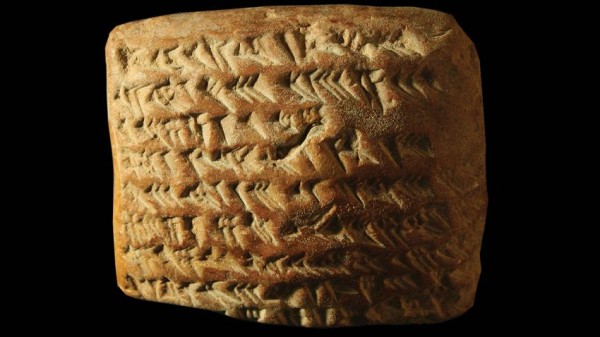By Ana Verayo, | January 30, 2016

Cuneiform tablet with calculations involving a trapezoid.
New findings reveal the earliest known evidence of mathematical and geometric astronomy are in the form of ancient tablets filled with Babylonian cuneiform script.
Scientists have analyzed these tablets, revealing how ancient Babylonians possessed the capabilities to calculate the position of Jupiter with the help of geometric methods which were then used some 1,400 years later during the 14th century in Europe.
Like Us on Facebook
According to author of the study, Mathieu Ossendrijver from Humboldt University, Berlin, these texts are the first earliest evidence of the antiquity of mathematical astronomy. These texts describe the velocity of Jupiter in the sky where it can change from time to time.
These tablets were first uncovered in Iraq during the 1880s from an archaeological dig, that are now housed under the British Museum. The tablets are also so well preserved that archaeologists were able to decipher and analyze the texts that were written between 350 to 50 BCE.
These tablets also belong to a bigger collection of 450 astronomy tablets hailing from Babylon and Uruk, that depicts data about celestial bodies, neatly arranged in rows and columns, complete with instructions.
The team of Ossendrijver examined five tablets that are known as trapezoid text A to trapezoid text E where four of them included geometrical trapezoid shapes however, these shapes are still an enigma to researchers.
Ossendrijver revealed that one of the tablets known as trapezoid text A, provided an important clue about deciphering the other four tablets. He says that the tablets describe the motion of Jupiter along with its velocity, which also include the number of degrees it moves across the sky during the day.
He says that when Jupiter's velocity is charted against its timeline, it will depict a curve that somehow appears like a rectangle with a slanted top, revealing the trapezoid shape. Apart from this, the tablets also show day and night intervals of how Jupiter appears on the horizon at night along with information about the planet's position in the sky after 60 and 120 days.
The team says that it is still unknown why the ancient Babylonians were so fascinated by Jupiter and its motions, but one good theory is that Jupiter was associated with the chief god of the city of Babylon, Marduk. During these ancient times, astronomers who are also priests, worked in Babylon's main temple where Marduk is worshipped. All the ancient gods possess a star and Jupiter symbolizes Marduk.
Apart from astronomical plots, Babylonian writing were thought to develop from an accounting system to keep track of properties like grain, sheep or the size of land. However, by 2,000 BCE, Babylonians began to develop mathematics using elaborate field calculations and techniques to solve quadratic equations, that describes and computes motion, which is now known as modern day integral calculus.
This new study is published in the journal, Science.
-
Use of Coronavirus Pandemic Drones Raises Privacy Concerns: Drones Spread Fear, Local Officials Say

-
Coronavirus Hampers The Delivery Of Lockheed Martin F-35 Stealth Fighters For 2020

-
Instagram Speeds Up Plans to Add Account Memorialization Feature Due to COVID-19 Deaths

-
NASA: Perseverance Plans to Bring 'Mars Rock' to Earth in 2031

-
600 Dead And 3,000 In The Hospital as Iranians Believed Drinking High-Concentrations of Alcohol Can Cure The Coronavirus

-
600 Dead And 3,000 In The Hospital as Iranians Believed Drinking High-Concentrations of Alcohol Can Cure The Coronavirus

-
COVID-19: Doctors, Nurses Use Virtual Reality to Learn New Skills in Treating Coronavirus Patients







